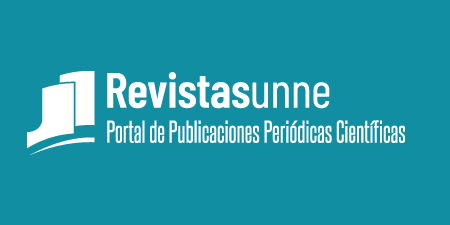Mostrar el registro sencillo del ítem
Biotechnology applied to cassava propagation in Argentina
| dc.contributor | Pace, Colleen M | |
| dc.contributor.author | Cavallero, María Inés | |
| dc.contributor.author | Medina, Ricardo Daniel | |
| dc.contributor.author | Hoyos, Rosa Elena | |
| dc.contributor.author | Cenóz, Pedro Jorge | |
| dc.contributor.author | Mroginski, Luis Amado | |
| dc.date.accessioned | 2021-05-31T17:29:54Z | |
| dc.date.available | 2021-05-31T17:29:54Z | |
| dc.date.issued | 2012 | |
| dc.identifier.citation | Cavallero, María Inés, et.al., 2012. Biotechnology applied to cassava propagation in Argentina. En: Pace, Colleen M., ed. Cassava: farming, uses, and economic impact. New York: Nova Science Publishers, p. 55-77. ISBN 978-1-61209-655-1. | es |
| dc.identifier.isbn | 978-1-61209-655-1 | es |
| dc.identifier.uri | http://repositorio.unne.edu.ar/handle/123456789/28004 | |
| dc.description.abstract | Cassava is a staple food to millions of people in tropical and subtropical countries. Although it is traditionally cultivated from stem cuttings, which is a simple and inexpensive technique, this method presents serious problems such as low multiplication rates, difficulties to conserve stems, and dissemination of pests and diseases. Many of these problems would be solved through in vitro tissue culture. In this work, we evaluated the in vitro establishment and multiplication of 28 cassava clones of agronomic interest for the Northeastern Argentina, a boundary area for this crop. Since the transfer of in vitro plants to ex vitro conditions is a critical phase of micropropagation, we evaluated the effect of different acclimatization treatments on survival and growth parameters of plants (cv EC118) grown in a culture chamber. We also scored their field survival and performance by comparing them with plants obtained by the conventional planting technique. After disinfection, uninodal segment culture in Murashige and Skoog medium supplemented with 0.01 mg/L BAP + 0.01 mg/L NAA + 0.1 mg/L GA3 allowed the in vitro establishment of 100% of the clones and their subsequent multiplication. Cultures were maintained at 27°±2°C with a 14 h photoperiod. During establishment, sprouting occurred in 100% of the clones and rooting in 93% of them; the remaining clones formed roots during the multiplication phase. Thirty days after multiplication, the plants presented significant differences in plant height, average number of nodes per plant and number of roots per plant. During acclimatization, five treatments were evaluated: three substrates (perlite, T1; sand + vermicompost, T2; commercial substrate composed of peat and perlite, T3), and two hydroponic treatments (tapwater, T4; Arnon and Hoagland nutrient solution, T5). Although in chamber growth conditions the acclimatized plants showed statistical differences in several growth parameters depending on the treatments, no differences were observed in the survival percentage. Shoot and root fresh and dry weight and leaf area were highest in T5 and lowest in T2 and T4. Field survival differed significantly between treatments, discriminating a group with high survival rates (T5: 73.3%, T3: 86.7%, and control treatment: 100%) and another with low survival rates (T2: 33.3%; T1: 35% and T4: 36.7%). At harvest, there were no significant differences in the total fresh weight. However, the percentage of biomass partitioned to roots was significantly higher in T3 and T5, which resulted in a higher tuberous roots yield than that of the control treatment. | es |
| dc.format | application/pdf | es |
| dc.format.extent | p. 55-77 | es |
| dc.language.iso | eng | es |
| dc.publisher | Nova Science Publishers | es |
| dc.rights | openAccess | es |
| dc.rights.uri | http://creativecommons.org/licenses/by-nc-nd/2.5/ar/ | es |
| dc.subject | Acclimatization | es |
| dc.subject | Cassava | es |
| dc.subject | In vitro plant regeneration | es |
| dc.subject | Manihot escalenta | es |
| dc.subject | Tuberous roots | es |
| dc.subject | Yields | es |
| dc.title | Biotechnology applied to cassava propagation in Argentina | es |
| dc.type | parte de libro | es |
| unne.affiliation | Fil: Cavallero, María Inés. Instituto Nacional de Tecnología Agropecuaria. Centro Regional Chaco-Formosa. Estación Experimental Agropecuaria El Colorado. Agencia de Extensión Rural El Colorado; Argentina. | es |
| unne.affiliation | Fil: Medina, Ricardo Daniel. Universidad Nacional del Nordeste. Facultad de Ciencias Agrarias. Instituto de Botánica del Nordeste; Argentina. | es |
| unne.affiliation | Fil: Medina, Ricardo Daniel. Consejo Nacional de Investigaciones Científicas y Técnicas. Centro Científico Tecnológico Conicet – Nordeste; Argentina. | es |
| unne.affiliation | Fil: Hoyos, Rosa Elena. Instituto Nacional de Tecnología Agropecuaria. Centro Regional Chaco-Formosa. Estación Experimental Agropecuaria El Colorado. Agencia de Extensión Rural El Colorado; Argentina. | es |
| unne.affiliation | Fil: Cenóz, Pedro Jorge. Universidad Nacional del Nordeste. Facultad de Ciencias Agrarias; Argentina. | es |
| unne.affiliation | Fil: Mroginski, Luis Amado. Universidad Nacional del Nordeste. Facultad de Ciencias Agrarias. Instituto de Botánica del Nordeste; Argentina. | es |
| unne.affiliation | Fil: Mroginski, Luis Amado. Consejo Nacional de Investigaciones Científicas y Técnicas. Centro Científico Tecnológico Conicet – Nordeste; Argentina. | es |
| unne.book.city | New York | es |
| unne.book.title | Cassava: farming, uses, and economic impact | es |
Ficheros en el ítem
Este ítem aparece en la(s) siguiente(s) colección(ones)
-
Partes de libros [27]





